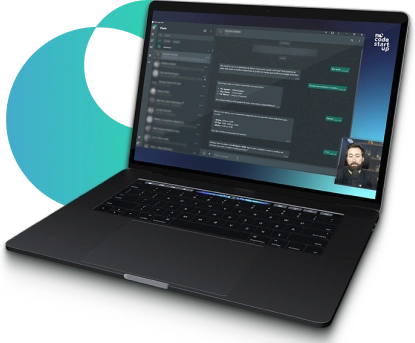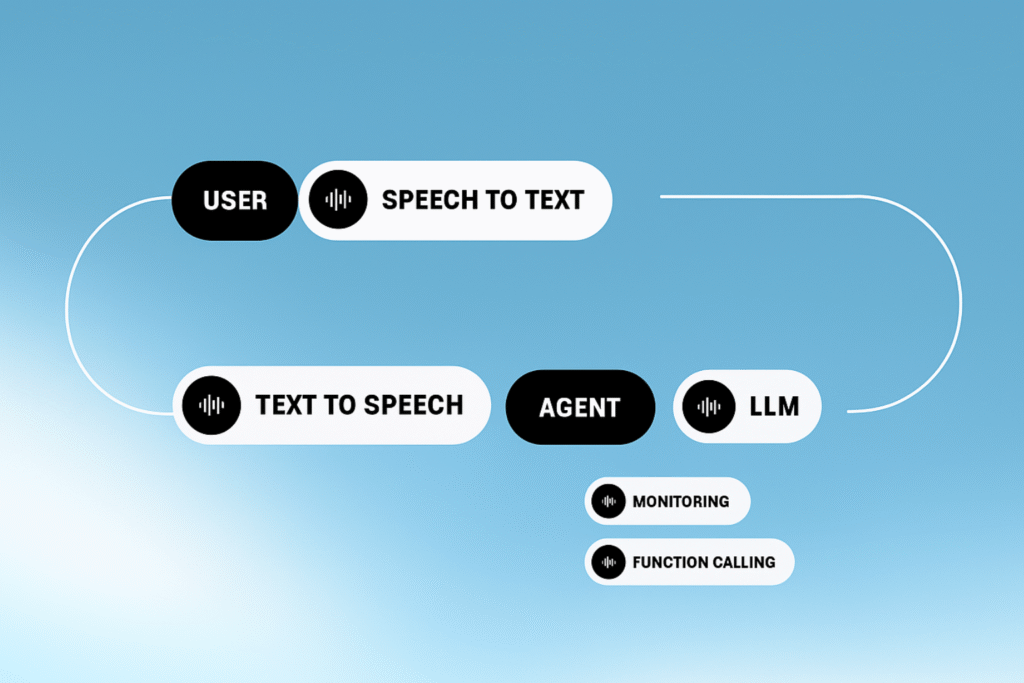Do you still waste hours reading long articles, emails or documents? Artificial Intelligence (AI) can do it for you in seconds. AI tools AI to summarize texts are revolutionizing the way we study, work and produce content. With the advancement of technology, it has become possible to delegate the reading and synthesis of large volumes of information to intelligent systems, allowing you to focus on what really matters: making decisions based on accurate and relevant information.
In this article, you will discover how to summarize texts with AI, what are the best tools, practical examples and how to automate this task with no-code platforms, even if you don't have advanced technical knowledge.

Recommended Reading
- AI Agents on WhatsApp: New Trend for 2025
- How to automate tasks with Make
- Manus AI Agents See How the Chinese Platform Works
What is an AI for Text Summarization?
Imagine having to read a document that is dozens of pages long and needing to capture the essentials in just a few minutes. This is exactly where summary AIs come in. They are like those attentive coworkers who know exactly what to filter out in a sea of information. With each paragraph you read, these digital assistants separate the essential from the accessory, creating a summary that makes sense to you. And the best part is that they do this with the naturalness of someone who understands our way of thinking, highlighting precisely what is worth reading. This makes our routine easier, more productive and organized.
The use of AI allows for greater efficiency when dealing with long texts, providing a more dynamic and optimized reading experience. And the best part is that you can shape these tools to your liking: it’s as if you were teaching the AI to speak your language and that of your audience. Do you want a more direct summary for executives? Or something more detailed for students? With small adjustments to the settings, it’s as if you were giving personalized instructions to an assistant that understands exactly what you want.
What Types of Text Can AI Summarize Well?
- Articles and blog posts
- Corporate reports and emails
- Meeting or video transcripts
- PDFs and academic documents
These are just a few examples. AI can also work with texts in different languages, respecting cultural and linguistic contexts. This makes it a valuable tool in international corporate environments and academic institutions.
Top AI Tools for Text Summarization
ChatGPT
ChatGPT can be used with custom prompts or plugins to generate summaries with different styles and levels of detail. For example, you can configure a prompt to summarize academic articles into bullet points, adapt corporate reports to more objective language, or even generate executive summaries from meeting minutes. Additionally, with memory functionality or API integration, ChatGPT can be incorporated into automated workflows where it learns from feedback and adjustments, making each summary more aligned to your needs.
QuillBot
QuillBot offers a dedicated tool for summarizing sentences or paragraphs, ideal for academic texts and articles. It also allows you to adjust the level of detail in your summary, which is great for those who need a quick overview or a more in-depth summary. QuillBot also includes additional features such as paraphrasing and a grammar checker, which makes it an even more complete tool for those who work with large volumes of text.
SMMRY
SMMRY is a simple, online solution that focuses on condensing texts into a few user-adjustable sentences. What sets this tool apart is its minimalist approach, ideal for those who need a quick, straight-to-the-point summary. You can control the number of sentences you want in the final result and adapt the tool to remove specific sentences, such as those containing certain keywords or quotes.
Resoomer
Resoomer is designed for argumentative and academic texts, with support for multiple languages. The tool is especially useful for those who need to analyze long texts with a clear logical structure, such as essays, dissertations, and legal articles. Resoomer allows you to quickly identify the main arguments, central ideas, and conclusions, making dense texts easier to understand. In addition, it offers browser integration to summarize web content in real time, which is a benefit for researchers and students.
Scholarcy
Scholarcy makes it easy to summarize scientific articles and also generates keywords and study sheets. This tool is especially effective for those who work with academic publications, as it not only condenses the content but also highlights important sections such as objectives, methodology, results and conclusions. Scholarcy also allows the extraction of tables, figures and references, organizing this information in a quick-read format. Integration with reference managers such as EndNote and Zotero is a plus for researchers.
Zamzar Summarizer
Zamzar Summarizer allows you to convert and summarize files such as PDF and DOCX in a simple and straightforward way. The great advantage of Zamzar is its ability to handle a wide variety of file formats, offering not only text summarization but also conversion between formats such as TXT, HTML, and EPUB. This makes it ideal for professionals who deal with documents on different platforms and need to integrate them into a single digital workflow. In addition, the tool can be used without the need for installation, directly from the browser, which further speeds up the process.
Notion AI
Notion AI is ideal for Notion users, making it easy to summarize documents and take notes within the app itself. In addition to summarizing text, Notion AI also allows you to rewrite paragraphs, generate headings, and create lists from text content. Integrated directly with your pages and databases, Notion AI streamlines the workflow for teams using the platform to manage projects, documentation, and ideas.

Automating Summaries with AI and No-Code
Use AI to summarize texts goes far beyond manual tools. By combining no-code platforms like Make with robust AI, you can completely automate the process. Imagine you receive an email with a long document, and the system automatically summarizes the content and saves it to your cloud. This is productivity with AI applied intelligently.
Practical Example
“How I Built an Automatic Email Summarizer with Make + OpenAI”
In this example, you will learn step by step how to set up this automation. First, we define a trigger in Make to detect new emails with attachments. Then, we connect the flow to the OpenAI API, which processes the text and generates a summary. Finally, the summary is sent to your email or saved in a Google Doc. This solution is ideal for those who receive a lot of reports or proposals and need to evaluate them quickly.
Another interesting approach is to create a custom agent using the N8N it's the ChatGPT. With N8N, you can create more complex and adaptable workflows. For example, you can set up a workflow where the system automatically processes, via API, the documents you send to a Google Drive folder, summarizes them and classifies them by topic in spreadsheets. The agent learns from the edits the user makes, identifies text types and adjusts the summary style according to the topic, becoming more efficient with each interaction.
For those who want to create robust automations with N8N, check out our N8N Course.

Practical Tips to Improve Your Results with AI
If you are just starting to use AI to summarize texts, some good practices can make all the difference:
- Adjust the prompts: If the AI doesn’t deliver exactly what you want, refine your instruction.
- Test different tools: Not all AIs respond the same way. Explore and see which one works best for you.
- Automate when possible: Use no-code tools to create flows that save you time.
- Review summaries: Even with AI, reviewing ensures that the content is aligned with your needs.
Let's clear up your doubts?
If you still have questions about how to apply AI to summarize texts, here are some answers that may help:
What are the best AI options? to create summaries? Many users use tools like ChatGPT, QuillBot and SMMRY for their practicality and the efficient results they offer. Depending on the volume and type of text, you may want to opt for a more automated solution, such as integration with Make.
Can I automatically summarize long texts? Yes! Using AI to summarize text in conjunction with automation platforms, you can set up systems that process long documents automatically.
How to ensure that the summary is unique? Personalize prompts and always review content. While AI rewrites, human adjustments add value and avoid originality issues.
With AI, you can transform the way you deal with information on a daily basis. From automating email summaries to creating complete workflows, the possibilities are endless. Integrating these tools into your daily routine is the first step to saving time, increasing productivity, and standing out professionally.
Want to master AI automation? Get started with our Makeup Course it's the Agents Course with OpenAI.









